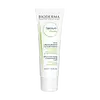What's inside
What's inside
 Key Ingredients
Key Ingredients

 Benefits
Benefits

 Concerns
Concerns

 Ingredients Side-by-side
Ingredients Side-by-side

Water
Skin ConditioningGlycerin
HumectantParaffinum Liquidum
EmollientEthylhexyl Palmitate
EmollientDipropylene Glycol
HumectantXylitol
HumectantBis-PEG/PPG-16/16 PEG/PPG-16/16 Dimethicone
EmollientSodium Acrylate/Sodium Acryloyldimethyl Taurate Copolymer
Emulsion StabilisingIsohexadecane
EmollientCaprylic/Capric Triglyceride
MaskingGlycyrrhetinic Acid
Skin ConditioningTocopheryl Acetate
AntioxidantPolysorbate 80
EmulsifyingDisodium EDTA
Allantoin
Skin ConditioningFructooligosaccharides
HumectantMannitol
HumectantPropylene Glycol
HumectantCetrimonium Bromide
AntimicrobialCeramide 3
Skin ConditioningRhamnose
HumectantGinkgo Biloba Leaf Extract
Skin ConditioningDodecyl Gallate
AntioxidantLaminaria Ochroleuca Extract
Skin ConditioningParfum
MaskingWater, Glycerin, Paraffinum Liquidum, Ethylhexyl Palmitate, Dipropylene Glycol, Xylitol, Bis-PEG/PPG-16/16 PEG/PPG-16/16 Dimethicone, Sodium Acrylate/Sodium Acryloyldimethyl Taurate Copolymer, Isohexadecane, Caprylic/Capric Triglyceride, Glycyrrhetinic Acid, Tocopheryl Acetate, Polysorbate 80, Disodium EDTA, Allantoin, Fructooligosaccharides, Mannitol, Propylene Glycol, Cetrimonium Bromide, Ceramide 3, Rhamnose, Ginkgo Biloba Leaf Extract, Dodecyl Gallate, Laminaria Ochroleuca Extract, Parfum
Water
Skin ConditioningHydrogenated Polydecene
EmollientGlycerin
HumectantEthylhexyl Stearate
EmollientCetearyl Alcohol
EmollientDimethicone
EmollientCrambe Abyssinica Seed Oil
Skin ConditioningPolyester-7
Skin ConditioningGlyceryl Stearate
EmollientXylitylglucoside
HumectantNeopentyl Glycol Diheptanoate
Emollient1,2-Hexanediol
Skin ConditioningBehenyl Alcohol
EmollientC10-18 Triglycerides
EmollientAminopropanediol
BufferingCeteareth-33
CleansingDipotassium Glycyrrhizate
HumectantElaeis Guineensis Oil
EmollientOleyl Alcohol
EmollientPhytosterols
Skin ConditioningAnhydroxylitol
HumectantCamelina Sativa Seed Oil
Skin ConditioningHydrolyzed Rice Protein
Skin ConditioningSodium Hyaluronate
HumectantTocopheryl Acetate
AntioxidantXylitol
HumectantTriethanolamine
BufferingAmmonium Acryloyldimethyltaurate/Vp Copolymer
Ceteth-20
CleansingCetyl Alcohol
EmollientDisodium EDTA
PEG-75 Stearate
Steareth-20
CleansingChlorphenesin
AntimicrobialPhenoxyethanol
PreservativeWater, Hydrogenated Polydecene, Glycerin, Ethylhexyl Stearate, Cetearyl Alcohol, Dimethicone, Crambe Abyssinica Seed Oil, Polyester-7, Glyceryl Stearate, Xylitylglucoside, Neopentyl Glycol Diheptanoate, 1,2-Hexanediol, Behenyl Alcohol, C10-18 Triglycerides, Aminopropanediol, Ceteareth-33, Dipotassium Glycyrrhizate, Elaeis Guineensis Oil, Oleyl Alcohol, Phytosterols, Anhydroxylitol, Camelina Sativa Seed Oil, Hydrolyzed Rice Protein, Sodium Hyaluronate, Tocopheryl Acetate, Xylitol, Triethanolamine, Ammonium Acryloyldimethyltaurate/Vp Copolymer, Ceteth-20, Cetyl Alcohol, Disodium EDTA, PEG-75 Stearate, Steareth-20, Chlorphenesin, Phenoxyethanol
 Reviews
Reviews

Ingredients Explained
These ingredients are found in both products.
Ingredients higher up in an ingredient list are typically present in a larger amount.
Disodium EDTA plays a role in making products more stable by aiding other preservatives.
It is a chelating agent, meaning it neutralizes metal ions that may be found in a product.
Disodium EDTA is a salt of edetic acid and is found to be safe in cosmetic ingredients.
Learn more about Disodium EDTAGlycerin is already naturally found in your skin. It helps moisturize and protect your skin.
A study from 2016 found glycerin to be more effective as a humectant than AHAs and hyaluronic acid.
As a humectant, it helps the skin stay hydrated by pulling moisture to your skin. The low molecular weight of glycerin allows it to pull moisture into the deeper layers of your skin.
Hydrated skin improves your skin barrier; Your skin barrier helps protect against irritants and bacteria.
Glycerin has also been found to have antimicrobial and antiviral properties. Due to these properties, glycerin is often used in wound and burn treatments.
In cosmetics, glycerin is usually derived from plants such as soybean or palm. However, it can also be sourced from animals, such as tallow or animal fat.
This ingredient is organic, colorless, odorless, and non-toxic.
Glycerin is the name for this ingredient in American English. British English uses Glycerol/Glycerine.
Learn more about GlycerinTocopheryl Acetate is AKA Vitamin E. It is an antioxidant and protects your skin from free radicals. Free radicals damage the skin by breaking down collagen.
One study found using Tocopheryl Acetate with Vitamin C decreased the number of sunburned cells.
Tocopheryl Acetate is commonly found in both skincare and dietary supplements.
Learn more about Tocopheryl AcetateWater. It's the most common cosmetic ingredient of all. You'll usually see it at the top of ingredient lists, meaning that it makes up the largest part of the product.
So why is it so popular? Water most often acts as a solvent - this means that it helps dissolve other ingredients into the formulation.
You'll also recognize water as that liquid we all need to stay alive. If you see this, drink a glass of water. Stay hydrated!
Learn more about WaterXylitol is a humectant and prebiotic. It can help with dry skin.
In studies, xylitol has been shown to improve dry skin. It decreased transepidermal water loss, or when water passes through the skin and evaporates. Xylitol also showed to help improve the biomechanical properties of the skin barrier.
The prebiotic property of xylitol may also help reinforce our skin's natural microbiome. Having a healthy microbiome prevents infection by bad bacteria and helps with hydration.
As a humectant, Xylitol helps draw moisture from both the air and from deeper skin layers. This helps keep skin hydrated.
Xylitol is a sugar alcohol and commonly used as a sugar substitute. It is naturally occurring in plants such as strawberries and pumpkin.
Learn more about Xylitol